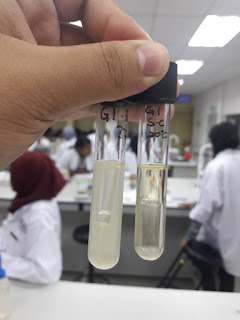E-Portfolio: Microbiology - Week 10
This week, we learned on Kingdom Protists that consist of:
1. Protozoa - consists of four main group which are Archaezoa, Rhizopoda, Ciliophora and Apicomplexa. These organism, usually single-celled and heterotrophic (using organic carbon as a source of energy), belonging to any of the major lineages of protist and, like most protists, typically microscopic. All protozoans are eukaryotes and therefore possess a “true,” or membrane-bound, nucleus
2. Algae - there are six groups of algae which are Chlorophyta (green algae), Rhodophyta (red algae), Phaeophyta (kelps), Pyrrophyta (dinoflagellates), Crystophyta (diatoms) and Euglenophyta. Algaes can be classified with several characteristics including their reproductive structure, chlorophyll and pigmentations, their storage materials, types of cell wall and others.
3.Slime molds - are a type of protist that aggregates into colonies and ingest bacteria, fungal spores, and possibly other protists. They consists of three main groups which are Myxomycota (plasmodial slime molds), Acrasiomycoyta (cellular slime molds) and Peronosporomycetes (water molds).
This week practical session, we had done experiments on how well the growth of microorganisms on different temperature and pH of the environment.
As you guys know, microorganisms can be classified into mesophilic, thermophilic and psychrophilic according to how well their growth on different temperature of the surrounding.
 |
| Different species of microorganisms being incubated in different temperature. |
 |
| Yeast (Saccharomyces cereviase) being cultured in broth culture to see on how well it ferment the solution |


Ulasan
Catat Ulasan